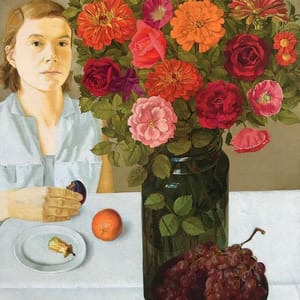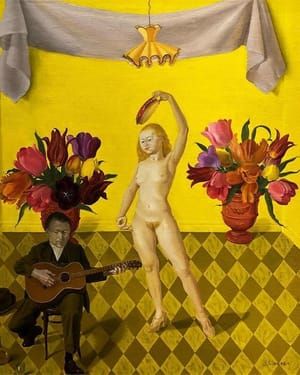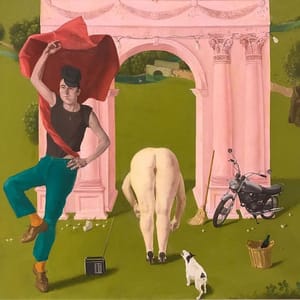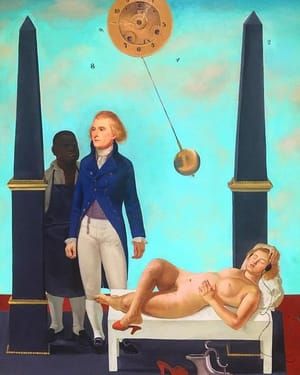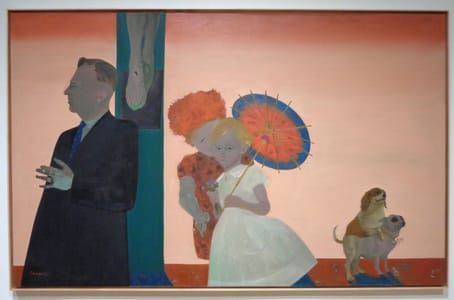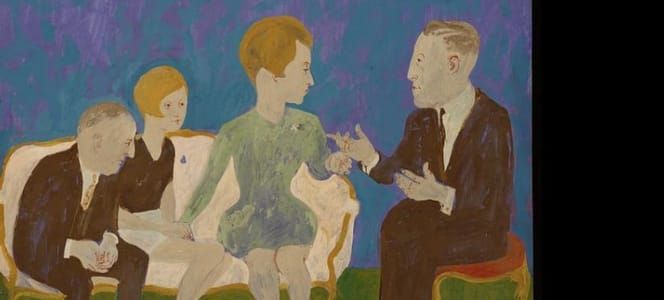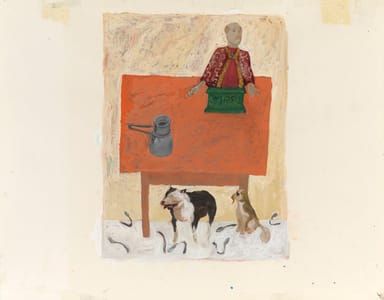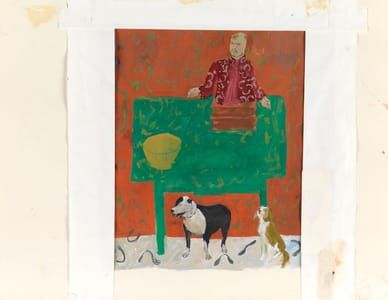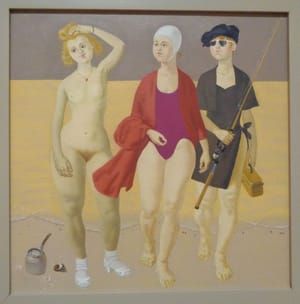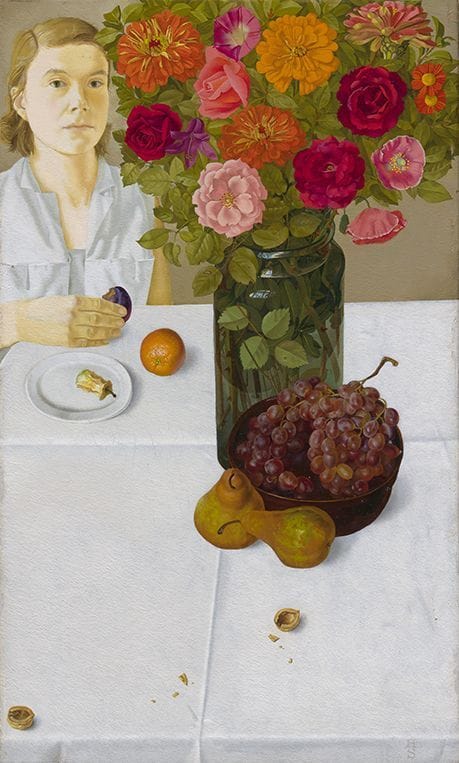

Self Portrait with Still Life, 1955
Honoré Sharrer
In 1949, Mademoiselle magazine declared Honoré Sharrer (1920–2009) “Woman Artist of the Year.” The distinction was certainly well founded, as Sharrer’s rise in the art world was meteoric. Starting at the tender age of 19 and throughout her twenties, she was included in major exhibitions at the Metropolitan Museum of Art, the Whitney Museum of American Art, and the Museum of Modern Art, which already included one of her paintings in its collection. At the age of 31, she was represented by a top New York art gallery and featured in Time, Newsweek, and Life magazines.
Because of her commitment to progressive ideals, however, Sharrer found herself increasingly marginalized in the tense political climate of the Cold War, the period following World War II marked by hostility between the United States, Soviet Russia, and Communist China. Furthermore, her representational art was dismissed in the rigidly male-driven, abstraction-focused art world of that era. She responded to these challenges by developing a sophisticated strategy of visual subversion that maintained her reformist concerns and poetic vision while concealing the incisive bite of her sharp criticism. Sharrer confidently drew from an impressive range of material—including art history, myth, nursery rhymes, and mass media. She used this material as a tool to expose an oppressive social and political climate that diminished the richness of human experience.
This is the first exhibition to fully reveal the formidable voice of this female artist. With equal part wit, seduction, and bite, her work presents a potent and often unsettling critique of the conventions of American culture.
[https://www.smith.edu/artmuseum/On-View/A-Dangerous-Woman-The-Art-of-Honore-Sharrer/Exhibition-Highlights]
Uploaded on Dec 19, 2017 by Suzan Hamer
Honoré Sharrer
artistArthur
Wait what?
